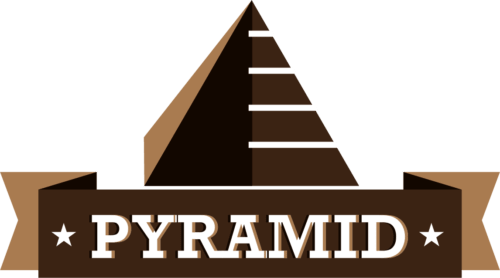
In an era where digital transactions reign supreme, the practice of writing checks might seem like a relic of the past. However, checks still play a crucial role in certain scenarios, such as making a down payment on a house or handling monthly rent payments. This article aims to demystify the process of writing and managing checks, offering a comprehensive guide to ensure accuracy, security, and confidence in your financial transactions. Whether you’re writing your first check or seeking a refresher, this guide has you covered.
Understanding the Basics of a Check
A check is a written instrument, dated and signed, that directs a bank to pay a specific sum of money to the bearer. It comprises key components such as the date, payee, amount (in both numerical and written form), a memo line, and your signature. Checks serve as a reliable form of payment in personal and business transactions, providing a traceable and secure method for handling money. Having a good understanding of these elements is crucial for confidently navigating the complex financial landscape.
Step-by-Step Guide: How to Write a Check

- Write Down the Date: Place the current date in the top right corner. This is important for record-keeping and check validity.
- Enter the Recipient’s Name: On the “Pay to the order of” line, write the name of the person or organization receiving the payment.
- Fill in the Dollar Amount: Next to the dollar sign, enter the amount in numerical form.
- Spell Out the Dollar Amount: Below the recipient’s name, write the amount in words for confirmation.
- Complete the Memo Line: This optional section helps describe the purpose of the check.
- Sign the Check: Your signature, as it appears on the check, authorizes the transaction.
- Record the Check: Keep track of each check written in your checkbook register for efficient financial management.
Writing a Check for Cash: Procedures and Precautions
Writing a check for cash requires additional caution. The process is similar to writing a regular check, but you’ll write “Cash” on the “Pay to the order of” line. This makes the check negotiable by anyone holding it, highlighting the need for extra security measures. Be mindful of the risks: if lost or stolen, anyone could cash it, leading to potential financial loss.
Writing Checks to Individuals: Ensuring Security and Accuracy
When writing a check to an individual, precision and clarity are paramount. Ensure the recipient’s name is correctly spelled and matches their identification. This attention to detail prevents fraud and guarantees the check reaches its intended recipient without complications.
Voiding a Check: When and How to Do It Correctly
To void a check, write “VOID” in large letters across the front. This action deems the check unusable for payment. Voiding is necessary if you’ve made an error or the check is no longer needed. Always record this action in your checkbook register.
How to Cash and Deposit Checks Safely
Cashing a check involves endorsing it on the back and presenting it to a bank or check-cashing service. For safety, only endorse the check upon reaching the cashing point. Depositing a check can be done at a bank, ATM, or via a mobile app. Each method requires proper endorsement and adherence to security protocols.
Including Cents in Check Amounts
When including cents in check amounts, precision matters. Express cents as a fraction of a dollar (e.g., 50/100 for fifty cents) and ensure the written amount precisely matches the numerical value. This clarity is crucial in preventing misunderstandings and potential fraud.
Ordering Checks: Options and Considerations
You can order checks through your bank or a trusted third-party provider. Consider factors like security features, design, and cost. Ensure that your checks meet bank standards and provide necessary security features to safeguard your financial information.
Alternatives to Writing Checks: Modern Payment Solutions

In the digital age, alternatives to checks abound, including online banking, mobile payment apps (such as PayPal or Venmo), cashier’s checks, money orders, and debit or credit cards. Each option has its advantages and ideal scenarios, offering both convenience and enhanced security.
Using Checks for Bill Payments: Timeliness and Security
Using checks for bill payments requires careful timing to ensure they’re received and processed before due dates. Mail checks well in advance to avoid late fees and potential impacts on your credit score. Recording each check in your register assists in tracking payments and managing your finances effectively.
Mailing Checks to Creditors
When mailing checks for bill payments, timing is crucial to avoid late payments and adverse effects on your credit report. Here are some best practices:
- Understand the Processing Time: Know your bill’s due date and factor in both postal delivery and creditor processing times.
- Mail Early: Aim to send your check at least one week before the due date.
- Use Expedited Postal Services: If the due date is near, consider faster postal options.
- Include Necessary Information: Ensure all required details are on the check, including account information or payment stubs.
- Tracking and Confirmation: Use certified mail for a receipt and tracking number. Monitor the delivery status and confirm payment processing with the creditor.
- Avoid Common Mistakes: Refrain from postdating checks, ensure accurate amounts, and write legibly to prevent processing delays.
- Alternatives for Last-Minute Payments: Consider electronic payments or in-person options if the due date is imminent.
- Record Keeping: Document all details related to the mailed check, including in your checkbook register.

Securing Your Checks: Best Practices Against Fraud
To secure your checks, use gel pens, leave no blank spaces, order from reputable sources, store them safely, regularly monitor your account, and exercise caution when mailing. Shredding old checks is also advisable.
Conclusion: Mastering Check Writing and Management
Mastering the nuances of check writing and management is a valuable skill in personal finance. By adhering to the guidelines outlined in this article, you’ll handle checks with confidence, ensuring both security and accuracy in your financial transactions.
 How to Cancel Your Credit One Card: A Step-by-Step GuideNovember 28, 2023
How to Cancel Your Credit One Card: A Step-by-Step GuideNovember 28, 2023 How to Handle Credit Collection Services (CCS) on Your Credit ReportOctober 24, 2023
How to Handle Credit Collection Services (CCS) on Your Credit ReportOctober 24, 2023 How to Get Rid of Ability Recovery Services on Credit ReportDecember 14, 2023
How to Get Rid of Ability Recovery Services on Credit ReportDecember 14, 2023 How to Handle Transworld Systems (TSI) on Your Credit ReportDecember 6, 2023
How to Handle Transworld Systems (TSI) on Your Credit ReportDecember 6, 2023 How to Remove Hard Inquiries from Your Credit Report in 15 MinutesOctober 10, 2023
How to Remove Hard Inquiries from Your Credit Report in 15 MinutesOctober 10, 2023










